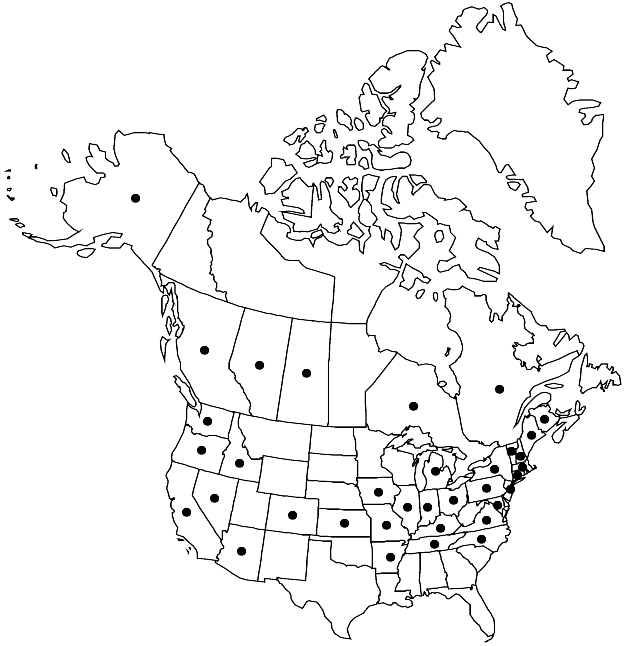Gemmabryum dichotomum
Phytologia 87: 66. 2005.
Plants green or yellow-green. Stems 0.5–1 (–2) cm, gemmiform to evenly foliate. Leaves ovatelanceolate to ovate, weakly concave, 0.5–1.5 (–2) mm; margins revolute proximally; apex acute to acuminate; costa percurrent to rarely short-excurrent; proximal laminal cells abruptly quadrate to short-rectangular, 1–2: 1; medial and distal cells 8–12 (–16) µm wide, 3–4: 1. Specialized asexual reproduction by leaf-axil bulbils, bulbils 1 (or 2) per axil, elongate-ovate, 250–750 µm, primordia present, broadly triangular, acute, arising from just below mid bulbil or near base. Capsule nutant, purple-red at maturity, 1–3 (–4) mm; hypophysis somewhat thickened, not distinctly inflated, not or weakly rugose; peristome well developed; endostome not adherent to exostome, basal membrane high, segments well developed, perforations ovate, cilia long, appendiculate.
Phenology: Capsules mature Apr–Jul (spring–summer).
Habitat: Dry to moist soil, soil over rock
Elevation: low to high elevations (0-2000 m)
Distribution

Alta., B.C., N.B., Ont., Que., Sask., Alaska, Ariz., Ark., Calif., Colo., Conn., Idaho, Ill., Ind., Iowa, Kans., Ky., Maine, Md., Mass., Mich., Mo., Nev., N.H., N.J., N.Y., N.C., Ohio, Oreg., Pa., Tenn., Vt., Va., Wash., s South America, Eurasia, n Africa, Atlantic Islands (Macronesia), Pacific Islands (New Zealand), Australia
Discussion
Gemmabryum dichotomum is a widespread species exhibiting a temperate bipolar distribution. The Southern Hemisphere material, G. dichotomum in the strict sense, has plants that are larger than Northern Hemisphere material that has traditionally gone under the name of Bryum bicolor but are otherwise similar. Ecologically, plants like those in the Southern Hemisphere are much more common and often dominant in Antarctic to subantarctic tundra vegetation, while typical Northern Hemisphere plants are primarily temperate in distribution.
Selected References
None.
Lower Taxa
"narrower" is not a number."narrow" is not a number.